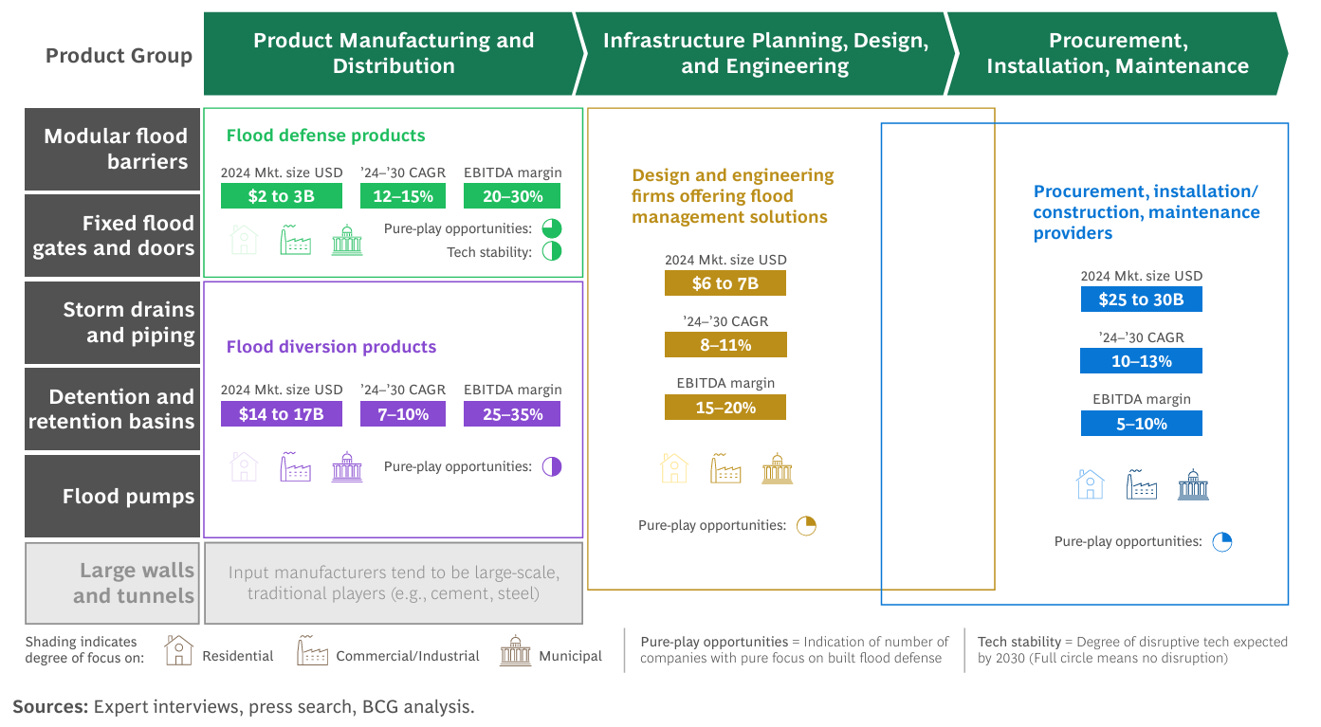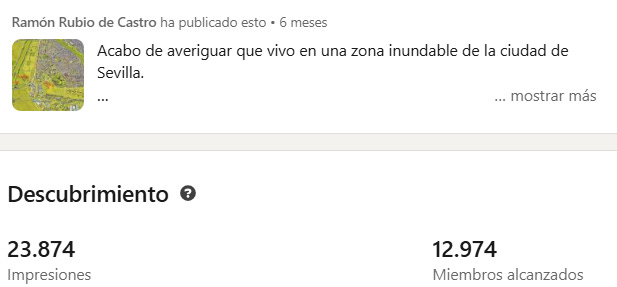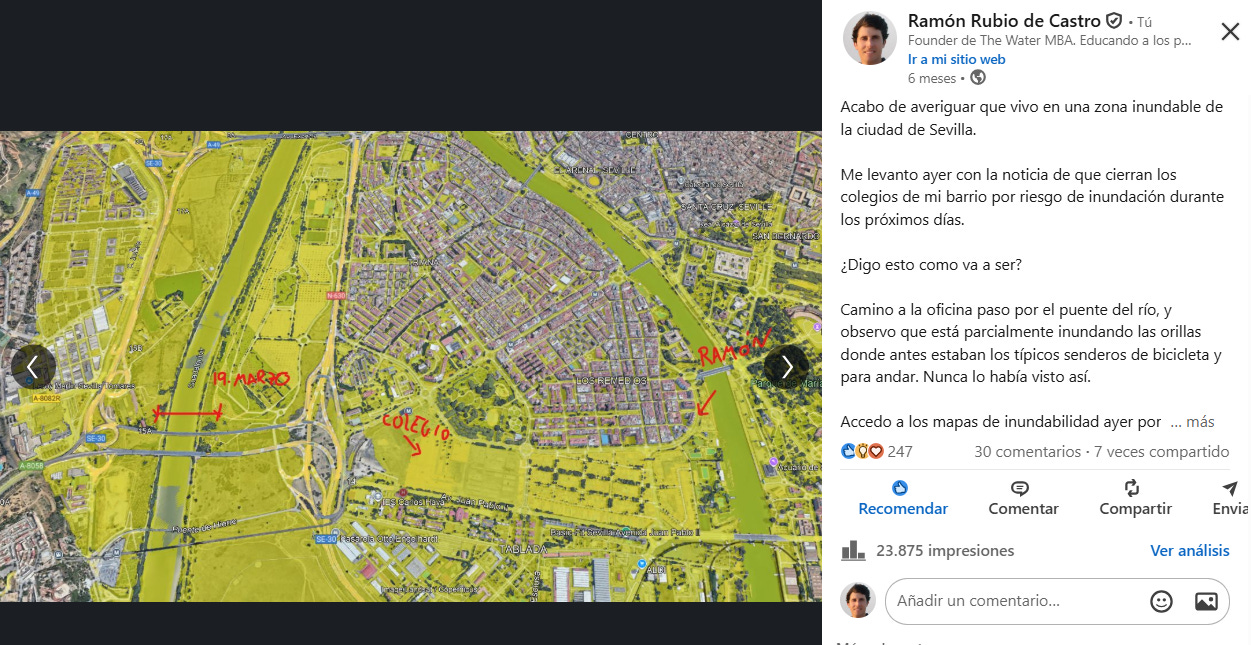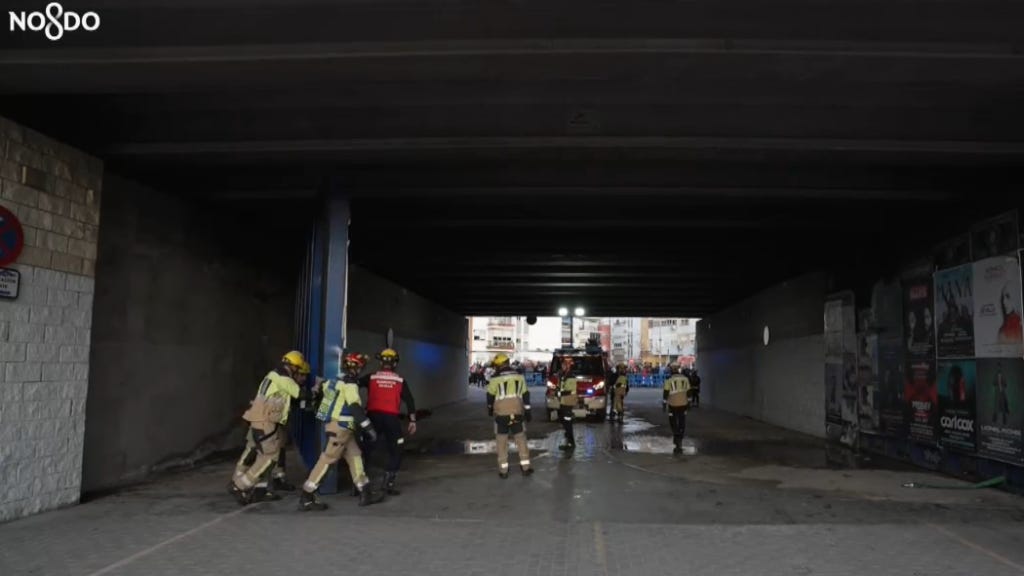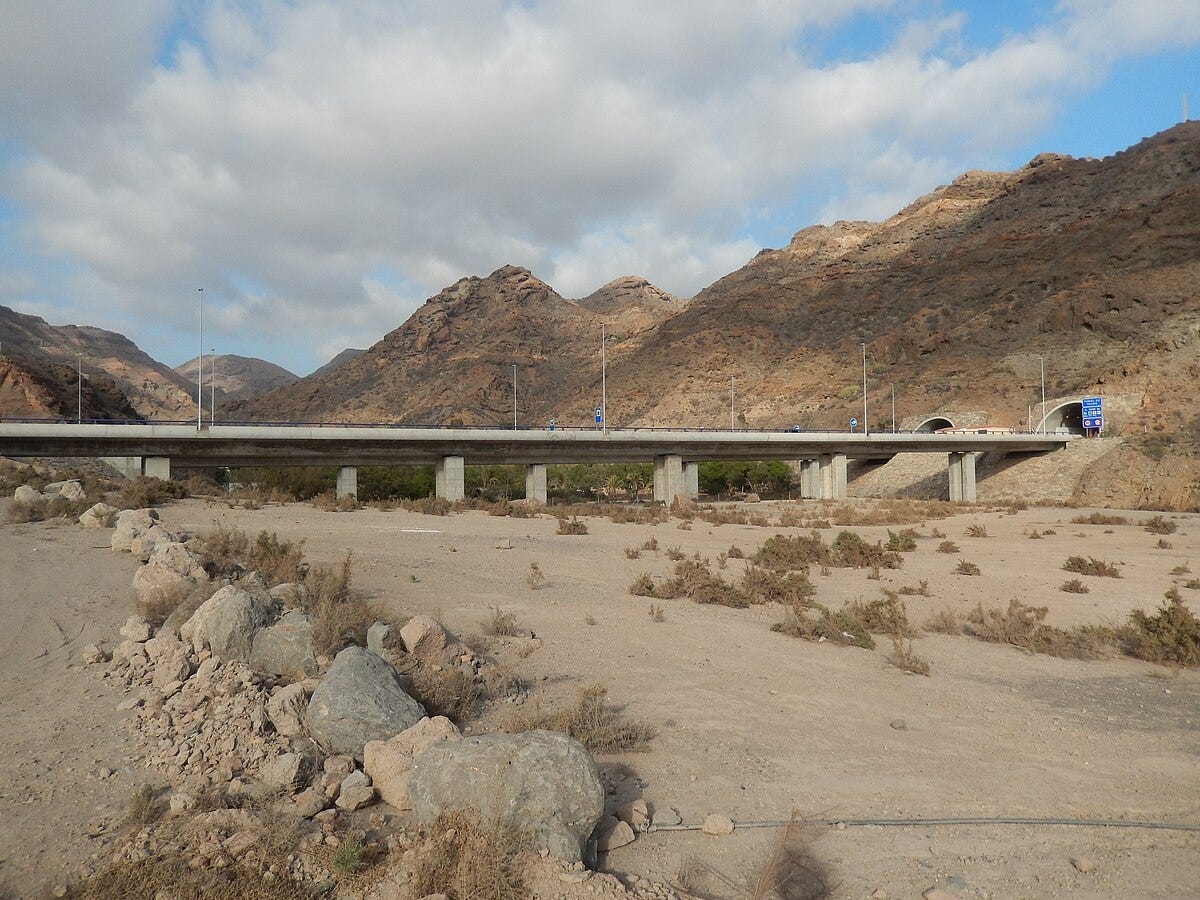Flooding Protection: 4 Hours ROI
How autonomous barriers and smart tech are redefining flood defense.
There is no better way to understand the complexities of certain fields of our business than the anecdote of the 4-hour ROI.
This edition, this week, is sponsored by myself.
Just a quick reminder that this is the open spot for anyone interested in reaching a truly unique global audience—and at the same time supporting our mission to keep creating value.
Here’s the link with more information.
Thank you—truly, thank you—for all the support.
As told by Oliver Femont, co-founder of the flood protection company Aggéres, in 2015, the company was hired to protect a large, public underground parking garage.
The garage had two levels below ground and could hold 200 cars.
To protect it from flooding, they installed a self-closing flood barrier at the exit.
This type of barrier is fully autonomous and operates without human intervention or electricity; it rises and locks into place when rising water levels fill its basin (details later below).
On the very day the installation was completed and delivered, a severe thunderstorm hit the area that night.
Around midnight, Oliver, who was at home, began receiving notifications on his phone from the barrier’s sensors, indicating that water was entering the system’s activation chamber.
At first, he suspected it might be a false alarm, but as the storm passed over his own house, he realized the rainfall was intense.
He decided to drive to the location to check on the new installation.
When he arrived, he saw that the barrier had indeed risen automatically and was successfully protecting the underground garage.
If the barrier had not been there, the 200 cars parked on the lower level would have been floating against the ceiling.
The return on investment (ROI) for the project was realized just four hours after the installation was finished.
The next day, Oliver received a call from the CEO of the parking garage, who told him,
“You’re my best investment ever. I never got a return on investment of four hours”.
This real-world test perfectly demonstrated the importance and immediate value of having proactive flood protection measures in place.
Main challenges
Oliver outlines several common barriers and hesitations that clients have when considering flood protection solutions:
Engineering and Adoption:
Initially, there was skepticism from engineers about using innovative materials like composites for self-closing flood barriers.
Engineers preferred traditional, calculable solutions like concrete walls and large embankments.
Overcoming this preference for conventional methods was an early challenge.
Cost and Return on Investment (ROI):
A primary barrier for the private market is the ROI.
Many clients are willing to invest but question if it’s worthwhile if they never experience a flood.
This is compared to installing a home alarm system—you invest in protection against an event that might not happen.
Often, a sense of urgency only arises after a flood has already occurred, with about 90% of domestic clients having already experienced flooding before purchasing a solution.
Insurance Issues:
A lack of incentive from insurance companies is another barrier.
Unlike fire or burglary alarms, which can lower insurance premiums, flood protection measures often don’t offer the same financial benefit.
This is changing, as some insurance companies are finding it impossible to insure homes that flood too often, creating an opportunity for certified flood protection installations to potentially lower insurance costs.
Lack of Proactive Regulation and Awareness:
While it’s evolving, there has been a lack of proactive government mandates.
However, this is shifting. The Belgian government, for instance, is now starting to require autonomous flood protection systems for new building permits in flood-prone zones.
Femont suggests that these regulations would be most effective if adopted at a European Union level, since floods don’t stop at national borders.
Something we all share
It’s funny, try talking to your friends (non-water peers) or society about water.
Talk about membranes? They don’t care.
Talk about the high quality of tap water and all the processes behind it? They don’t care.
Talk about how important it is to treat water before discharge? They don’t care.
Talk about non-sustainable tariffs? They’ll say, “Don’t make me pay more.”
But there is one thing that everyone seems to relate to, something we all share.
That’s flooding risks. It’s when people truly pay attention.
Flooding is usually perceived as a direct, tangible risk.
It impacts our lives immediately—and that immediacy is key.
Humans are wired to react when the impact is fast and obvious, which is why flooding captures attention like almost nothing else.
It must function when it’s needed most
When you have a manual barrier, it can be perfectly effective—but only if it is anticipated.
This picture, taken from my TV a few days ago, shows a weather forecast warning of a high-risk flood scenario in Spanish cities.
They had time to install the barriers you see in the photo, which are manual barriers placed, in this case, at garage doors.
But what happens when there is no forecast?
What if there isn’t enough time, and you can’t deploy the protection manually?
That’s what I found most interesting about Aggeres’ self-closing barrier: it works automatically in response to rising water levels.
The self-closing flood barrier is a fully autonomous flood defense system that operates without electricity or human intervention.
Its design is based on a simple principle: use the rising floodwater itself to activate the defense mechanism.
The system consists of two main components:
1. A long, narrow basin or channel installed in the ground.
2. A buoyant wall, typically made of a composite material like glass fiber polyurethane, which is hung inside the basin.
Under normal, dry conditions, the wall rests inside the basin, and the top is covered so that it can be driven over by any kind of traffic.
The basin is connected to a water source that indicates a flood risk, such as a river, a sewer system, or a drainage canal.
When the water level in the connected source (e.g., the river) rises to a critical point, it begins to overflow into the barrier’s basin.
As the basin fills with water, the buoyant composite wall floats up and rises into position.
Once raised, it physically locks itself into place, creating a solid, self-supporting barrier capable of withstanding the pressure of the floodwater.
Fully Autonomous
The barrier’s primary advantage is that it eliminates the need for human intervention or external power sources like electricity, hydraulics, or pneumatics.
This significantly reduces the chance of failure, as there is no need for someone to be present or for complex mechanical systems to function correctly.
Simplicity and Reliability
The design prioritizes simplicity with only one moving component—the floating wall.
By eliminating factors that can fail, such as mechanical parts that could rust or lock up, the system is considered one of the most secure and reliable solutions available.
Aesthetic Integration
When not in use, the barrier is hidden underground.
This makes it an ideal solution for urban environments, like city centers and historical areas, where building a permanent, high concrete wall would be visually disruptive.
It allows communities to maintain their connection to riversides while still ensuring a high level of protection.
Scalability and Versatility
The technology is highly scalable. It can be used for small-scale projects, such as protecting the entrance to an underground parking garage with a barrier just a few meters long.
It can also be applied to massive civil engineering projects, like the one in Antwerp, which involves installing a barrier system that will eventually be 842 meters long and 1.5 meters high along the river Scheldt.
The barriers can be designed to provide protection from 30 centimeters up to three meters in height.
Investors, it is a good time!
Some of you reading this are investors, so here’s a reference: in terms of climate adaptation and resilience opportunities, human-designed flood defense technologies appear to have an impressive compound annual growth rate.
It seems like this is an area worth testing the waters…!
Valencia 2024 floods
One year ago, Spain experienced a devastating scenario. For weeks, water and floods dominated the news.
It was an extreme event—cities were going about their normal lives when the flash floods struck, completely unexpected. The death toll rose to more than 200 people.
In this episode, we welcomed a remarkable guest: a young hydrology professional who is not only one of the best I’ve ever met, but also leads a strong and inspiring community.
I live in a flood-prone area
Flooding always draws attention—one proof is the reach of my last post. I wasn’t even aware that I was living in a flood-risk zone, with a return period of 500 years.
It struck me when, on my way to the office, I saw the river at levels I had never witnessed before. That led me to research and discover the reality. Flood maps are usually available for public consultation, and I strongly suggest you check the risk where you live. My post reached 13,000 people.
Historically, many cities were built along rivers. It is extremely difficult to adapt a city—or more precisely, its existing infrastructure—to modern flood challenges. River engineering made a lot of progress back then, often diverting flows to reduce the impact of floods.
Yet, we still see city planning and new urban developments being built in flood-risk zones. Who will finally put a stop to prioritizing money over resilience?
Then I discovered that near my neighborhood there are flood walls—and for the first time in my life, they had been closed to hold back the water (picture below).
What about arid regions?
A common misconception is that flooding only threatens areas with consistent rainfall.
In reality, flood risk exists almost everywhere, including arid regions.
Even just two or three days of rain per year can overwhelm the infrastructure in places like the Middle East.
Oliver notes that you wouldn’t have imagined the UAE becoming a market for flood protection in 2010, but the rapid, large-scale growth of its cities has introduced new vulnerabilities.
As a result of these factors, countries like the UAE and Saudi Arabia are now seen as potential clients for advanced flood protection barriers for their urban planning programs.
Dubai is already investing heavily in new underground tunnels to move floodwater out of the city.
I first learned this when I started traveling to the Middle East 10 years ago.
I crossed a bridge over a kilometer long, raised 4 meters above the ground, and thought, ‘Why are they building it like this?’
That’s when I came to understand what a wadi is.
A wadi is a riverbed or valley in an arid or semi-arid region that is normally dry, but can carry water during periods of heavy rainfall.
Essentially, it’s a seasonal or intermittent river, often prone to sudden flash floods.
Key points:
Usually dry most of the year (as picture below).
Can experience rapid and intense flooding when it rains.
Common in deserts and other arid regions (e.g., Middle East, North Africa).
Often shapes local settlements and infrastructure planning because of the flood risk.
Final quote
This proverb reminds us that progress doesn’t need to be fast to be meaningful.
Growth—whether personal, professional, or in any project—often happens gradually, step by step.
The danger isn’t in moving slowly, but in not moving at all.
Standing still means stagnation: no learning, no improvement, no transformation.
Slow progress, on the other hand, is still progress.
Even tiny steps forward, when sustained over time, compound into meaningful change.
It’s a mindset shift: instead of obsessing over speed or comparing yourself to others, focus on movement, however small.
The consistency of moving forward—rather than the pace—is what ultimately shapes your life and results.
Be not afraid of growing slowly; be afraid only of standing still.” — Chinese Proverb



